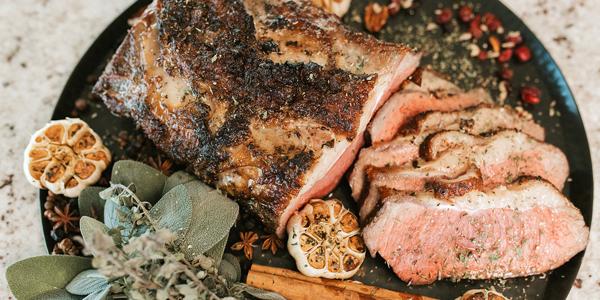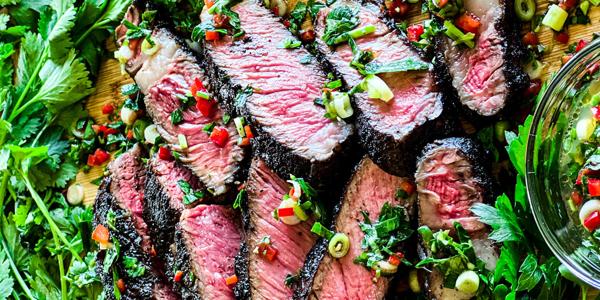Rock 'n' Roll Running Series
During extensive marathon training you will build strength, endurance, and confidence in your ability to take on the marathon. At the same time, marathon training can break you down. It will break down your muscle fibers, deplete your glycogen stores, and leave you feeling tired and fatigued.
That is why the marathon taper is such an important component of training. You need time to heal any damage that has happened from training and also to fill up your muscles’ glycogen stores.
From a training perspective, here is a great guide on how to taper for a marathon while preserving your fitness leading up to the big day. We also have a sample taper schedule from elite runner Nate Jenkins for you to peruse.
In this article, we will provide you with a nutrition guide on how to eat during the taper to ensure optimal energy stores and avoid unwanted weight gain.
The biggest mistake most marathoners make is not cutting down on food intake even though they are burning significantly fewer calories through exercise. Most marathon taper plans start with the last long run 3 weeks out from race day, with running volume significantly decreasing each week. Since you will be exercising less, you don’t need as many calories as you did when you were burning them for training.
If you normally ran 10 miles in a day while training, and during the taper you only ran 6, you would burn approximately 400 calories less.
The excess calories not being used for exercise can be used to load up your muscle glycogen stores, but they could also accumulate into unwanted weight gain. To be sure that you are adding to your glycogen stores and not just promoting weight gain, you must pay special attention to slowly decreasing your overall caloric intake while maintaining adequate carbohydrate intake.
In order to decrease calories but keep up carbohydrate intake you will have to trade some of the calories coming from fat for more carbohydrates. Fat should still contribute 20-25% of your total daily calories, but since you will be eating fewer calories this will mean less total grams from fat.
The following are some swaps you can make to cut down on fat and increase carbohydrate:
The goal for carbohydrates should be to maintain a daily intake of 3-5 grams per pound of body weight (6-10 g/kg). For a 150-lb athlete this will be approximately 450-750 grams (1800-3000 calories).
That is a lot of calories, so you have to be smart about keeping to a number within that range that is relative to your overall caloric needs. If you only need 3000 calories per day, then 450-500 grams would be adequate. Your body size plays a role as well. Smaller athletes should aim for the higher end of their range while larger athletes should stick towards the lower end.
If you read my previous article Carbohydrate Loading: 3 Effective Methods to Increase Your Chances of Marathon Success, you learned that you can double your muscle glycogen stores with adequate carbohydrate intake. You also learned that extra glycogen stores extra water, which shows up as extra weight. This is nothing to be concerned about. If you are properly carbohydrate loaded, you should expect to be 2-4 pounds heavier due to the extra water stored in your body.
Protein is needed to repair and reverse muscle damage and fatigue resulting from prolonged distance training. The goal for protein should be approximately 0.6-0.7 gram per pound (1.3-1.6 g/kg). Going back to our example of the 150-lb athlete, this would be 90-105 grams of protein per day.
This can easily be achieved by having a couple of servings of lean protein (chicken, turkey, roast beef, fish) or protein-rich foods (eggs, beans, tofu, lentils) each day as well as dairy products, which are good sources of protein and carbohydrate.
Keep in mind that many grains can contribute protein, as well. One serving of pasta (2 dry ounces) has about 42 grams of carbohydrate and 7 grams of protein. One slice of whole-grain bread has about 20 grams of carbohydrate and 4 grams of protein.
Eating foods rich in fiber promotes regular bowel movements while eating too many refined products (white bread, pasta, rice) can lead to constipation, especially when training has been decreased.
Good sources of fiber include fruits, vegetables, and whole-grain breads, pastas, and cereals. Fruits and vegetables are also a good source of antioxidants, which can boost the immune system and ward off illness. Be careful not to overdo it on fiber as it could unwittingly cause runner’s diarrhea and subsequently bring about dehydration and electrolyte imbalances. Popular fiber bars or other fiber-enriched foods are not necessary. Stick with the foods you normally eat and are comfortable with.
Remember that you are exercising less, so you need to make each calorie count. Don’t waste it on “empty calories” like cookies, candy and ice cream that may have fit in while you were training hard. Save those treats for after the race and use the last few weeks to hone in on good nutrition practices to optimize your performance.
Dehydration can significantly impair performance, but it is preventable with adequate hydration in the weeks, days, and hours leading up to the race.
To ensure you are properly hydrated, sip on fluids throughout the day. Water is sufficient, but juices and sports drinks can help meet your carbohydrate needs if you find that the food volume is too much. However, don’t rely solely on these beverages since they contain a lot of sugar.
Instead of looking for a specific number of ounces to drink, I implore you to use your body’s own measures of hydration. You should have to urinate every 2-4 hours and your urine should be pale yellow. If it is darker, then hydrate more. If it is clear, you may be hydrating too much.
After months of training you can rest assured that you are ready for the big race. There is no further training you can do to make yourself anymore ready. As they say, the hay is in the barn. The same is true for nutrition.
Hopefully you have been as diligent with your nutrition as you have been with your training, especially during the taper period. There is nothing you can do the day before the race to make up for poor nutrition in the months and weeks leading up to it. However, here are a few tips for race-day nutrition that can help you optimize the hard work you have done.





